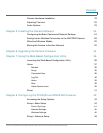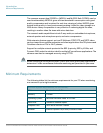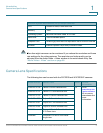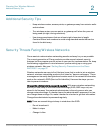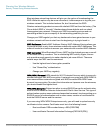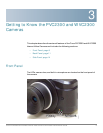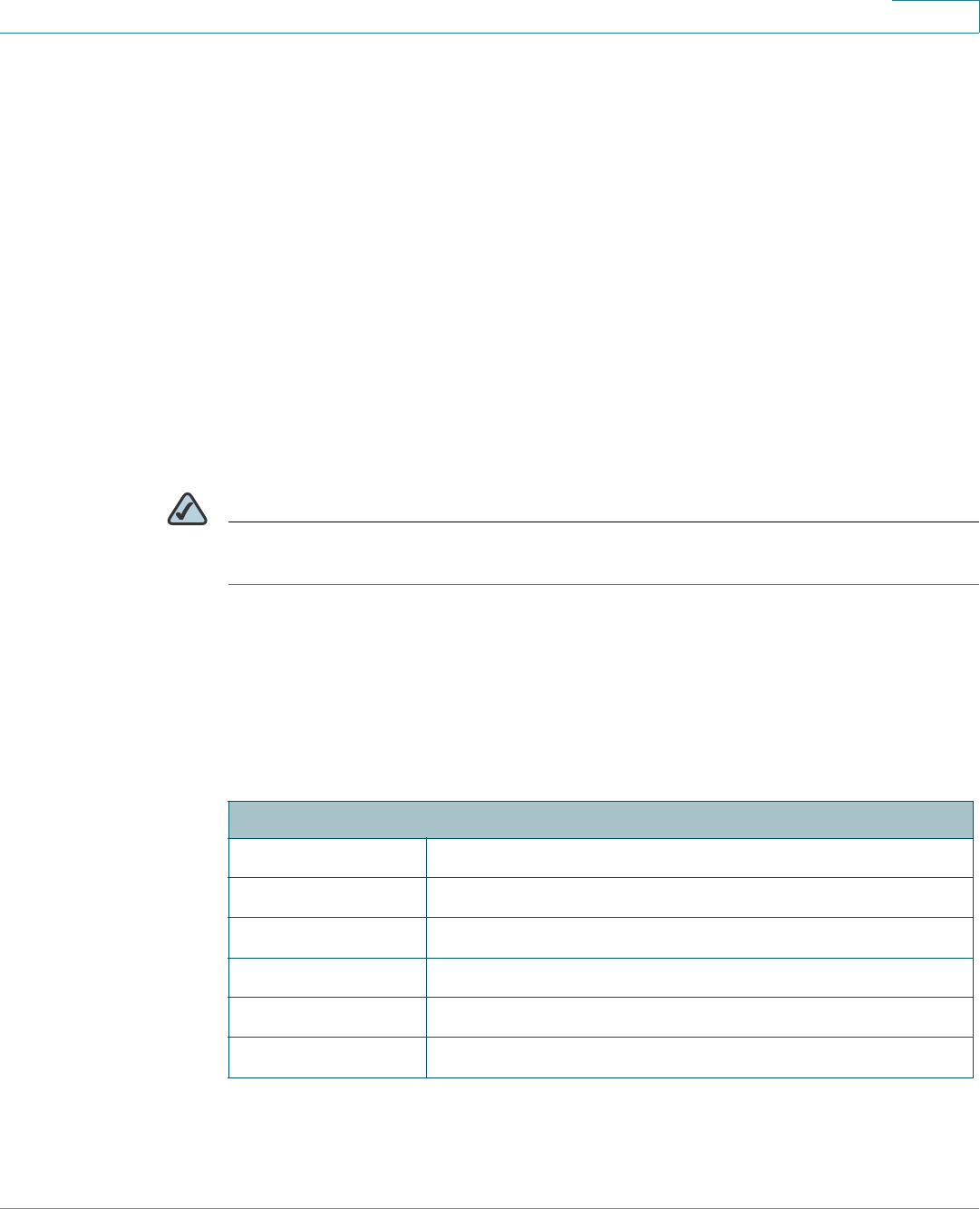
Introduction
Minimum Requirements
Cisco PVC2300 and WVC2300 Internet Video Cameras with Audio Administration Guide 2
1
The cameras support dual CODECs—MPEG-4 and MJPEG. Both CODECs can be
used simultaneously. MPEG-4 gives efficient bandwidth consumption with good
quality compression and is optimal for real-time viewing of video. MJPEG gives
optimal video quality in lossy environments making it ideal for video storage to a
NAS device. Lossy compression is very effective in reducing digital file sizes,
resulting in smaller video file sizes with minor data loss.
The camera’s audio capabilities include 2-way audio, an embedded microphone,
external speaker and microphone ports, and voice compression.
With extensive feature support such as IP Multicast, RTSP, RTP, and 3GPP, video
can be viewed from multiple endpoints and client applications like 3G phones and
Quicktime clients on PCs or Wi-Fi phones.
Support for multiple network protocols like 802.1p priority, 802.1q VLANs, and
Dynamic DNS, make the solution ideal for multiple IP surveillance applications. The
cameras can also be managed securely using HTTPS.
NOTE Before installing a surveillance system, check with local government agencies to
determine if video surveillance and audio monitoring are permitted in your area.
Minimum Requirements
The following tables list the minimum requirements for your PC when monitoring
one camera or up to eight cameras.
Minimum System Requirements (for one camera):
CPU Pentium 4 class, 2 GHz
Memory 512 MB
Operating System Microsoft Windows 2000, XP or Vista
Hard Drive 500 MB of available space
Graphics Card AGP with a minimum 128 MB
Browser Internet Explorer 6.0 (or later) or Mozilla Firefox






